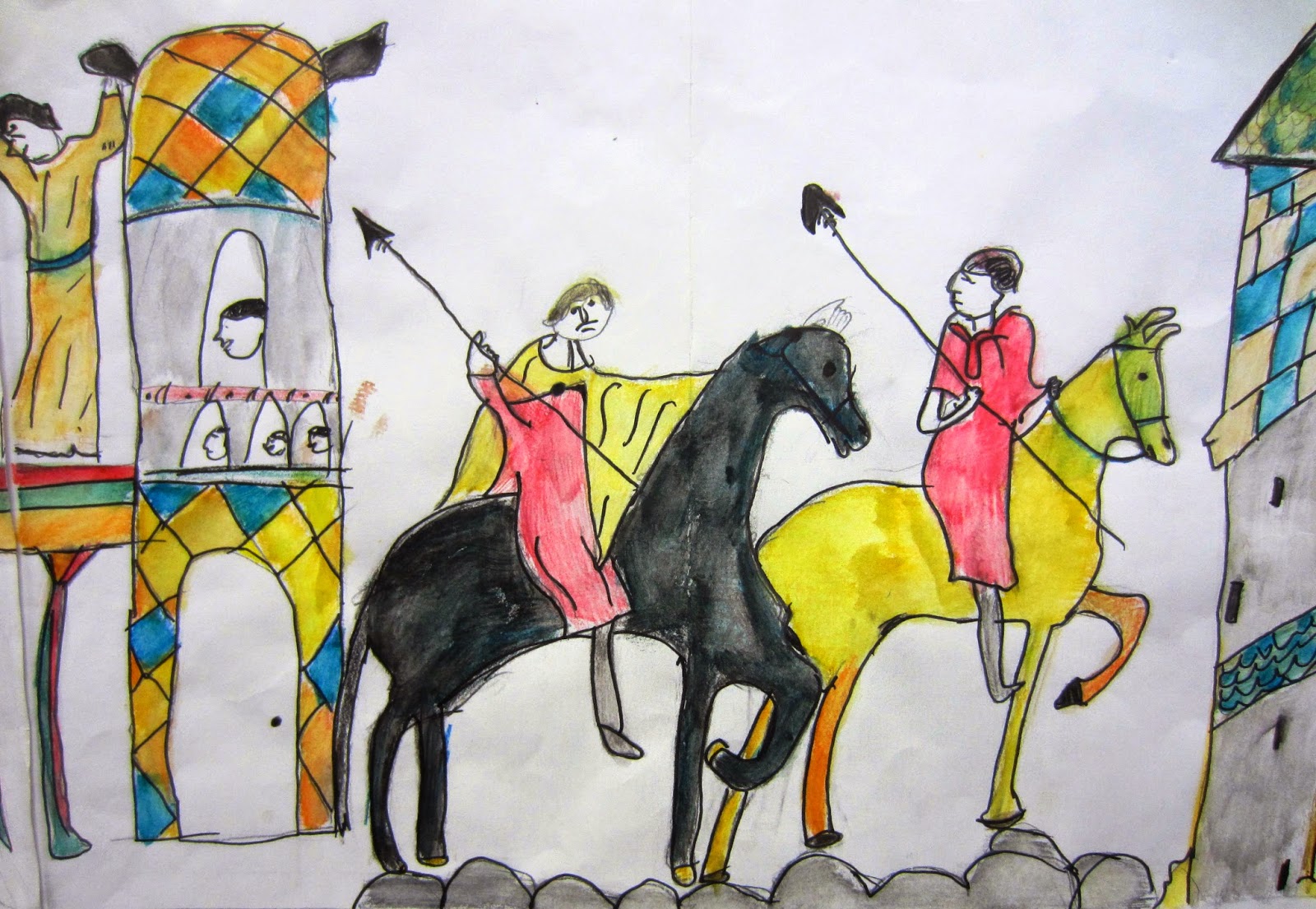We have done reading on this in English and in French, thanks to our lovely student from Madagascar, as well as watched the above animation. We looked at the idea of visual narratives and this one is truly amazing. We are attempting to recreate the tapestry through pencils, water colours and mapping pens on cartridge paper. Each student will do two panels each over the next three weeks. I saw this magnificent 70 metre tapestry when I visited France some three years ago. It is the most famous tapestry in the world.
Photography wasn't permitted but we were lucky enough to see another amazing tapestry in Catle Pirou which created in more modern times but in the same style called Tapisseria de Pirou which was created by Therese Ozenne (from 1976-1992) which tells a part of this Norman history: the coming of the Vikings and Sicily's conquest.
Some students may enjoy this interactive site:
http://www.bayeuxtapestry.org.uk/interactive/BayeuxCreate.htm
Students are nearing the completion of this art experience and here a few of the finished products...more to come early term II. The Keys to Success which were promoted in this lessons were: organisation, confidence and perseverance. I am very proud of the work they are producing. It is a very high standard for students of this age. Well done everyone. It pieced together quite well and we shared it in a buddy assembly as a small narrative-driven play with a few interesting and comical actions. Who dropped the horse? It is currently on display in our quiet room and will be available for viewing for a few weeks over the parent/teacher interview period. Lots of detail! The longer you look at it, the more you see.
+Bayeu+xTapestry.JPG)
+Bayeu+xTapestry.JPG)
Chateau+Fort+de+Pirou.JPG)
Chateau+Fort+de+Pirou.JPG)
Chateau+Fort+de+Pirou.JPG)
Chateau+Fort+de+Pirou.JPG)
Chateau+Fort+de+Pirou.JPG)
Chateau+Fort+de+Pirou.JPG)
Chateau+Fort+de+Pirou.JPG)
Chateau+Fort+de+Pirou.JPG)

.jpg)
.jpg)
.jpg)
.jpg)
.jpg)
.jpg)
.jpg)



















.JPG)
.JPG)
.JPG)
.JPG)




.JPG)
.JPG)
.JPG)
.JPG)
.JPG)
.JPG)
.JPG)

.JPG)
.JPG)
.JPG)
.JPG)
.JPG)
.JPG)
.JPG)
.JPG)
.JPG)
.JPG)
.JPG)
.JPG)
.JPG)


.JPG)
.JPG)
.JPG)
.JPG)
.JPG)
.JPG)
.JPG)






































































